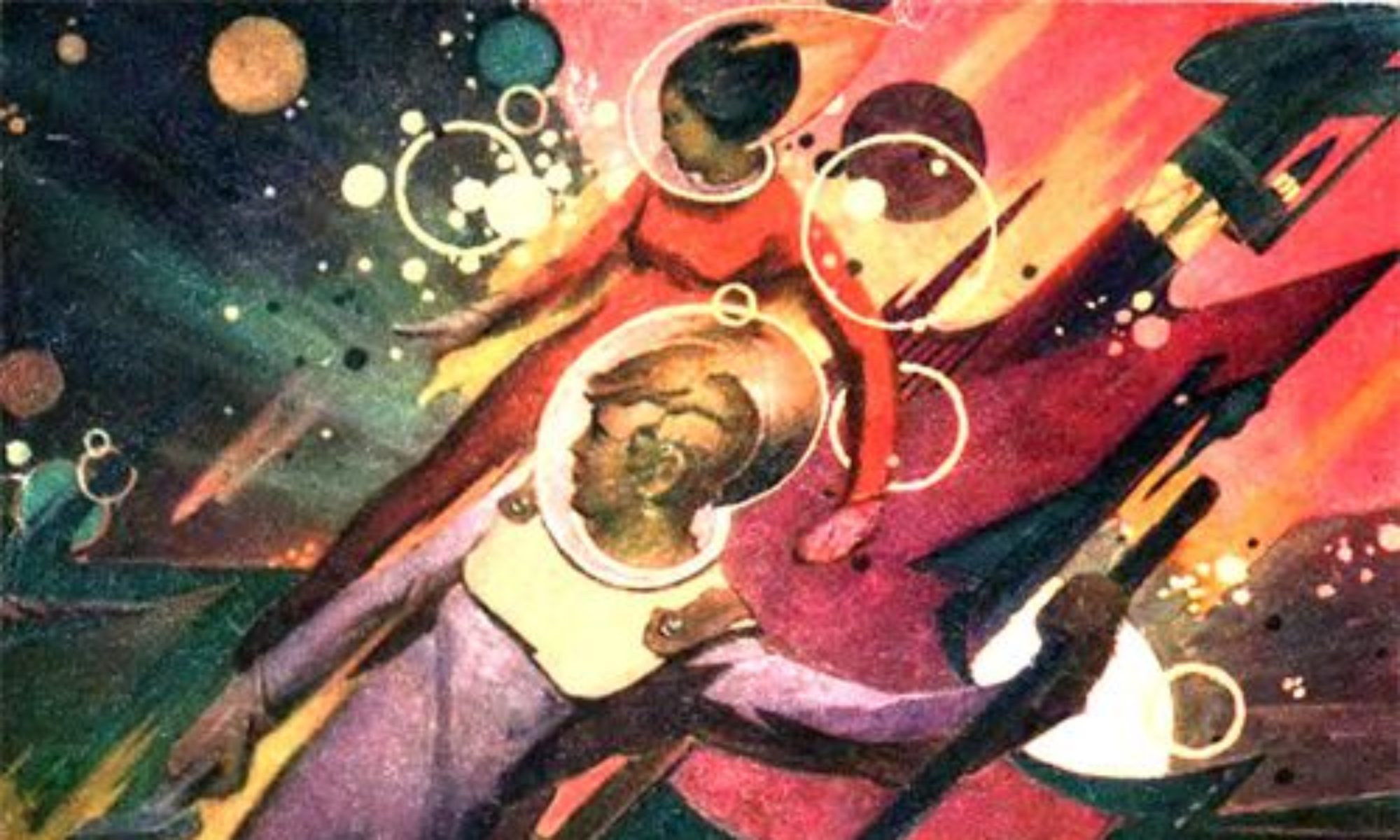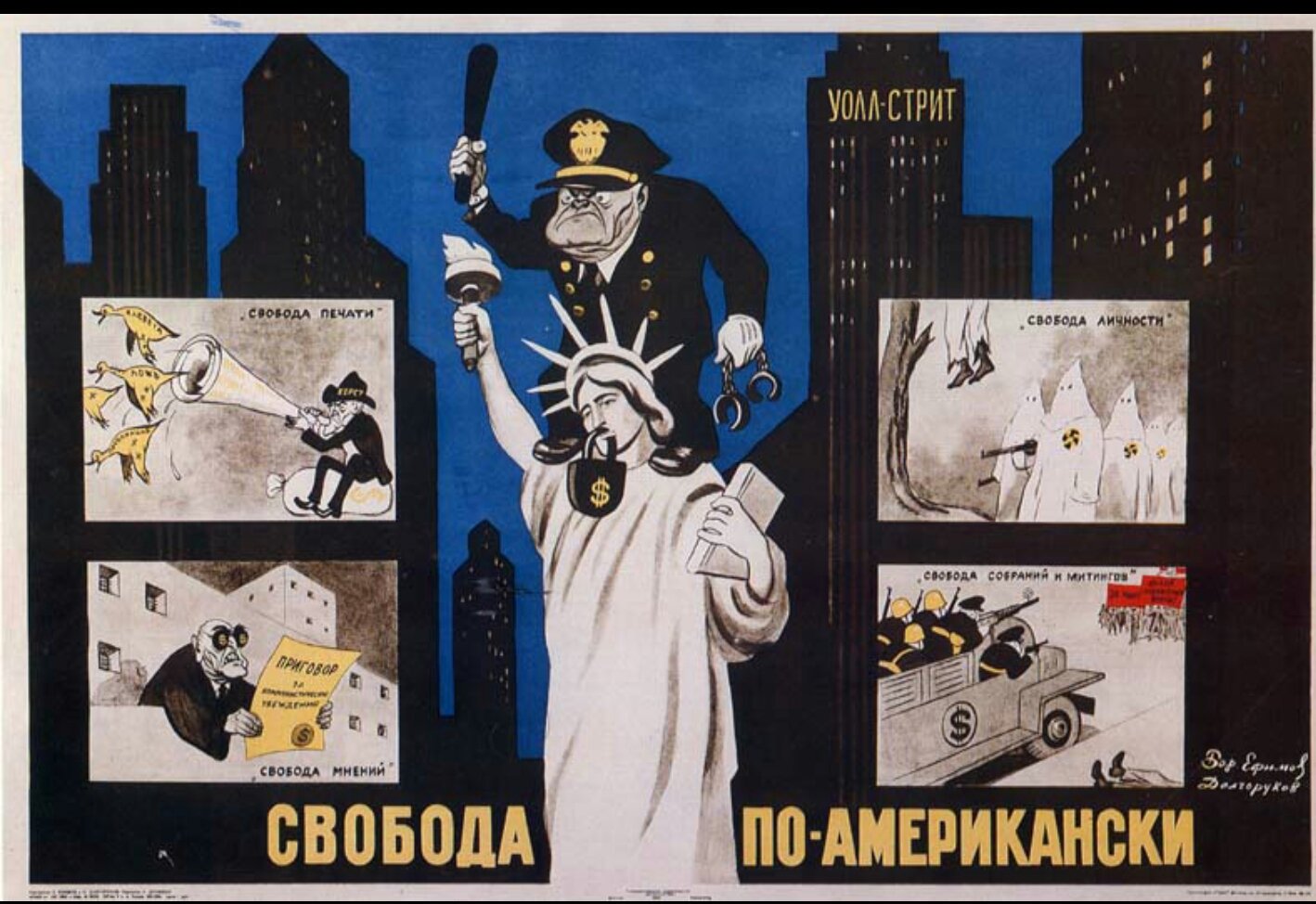The United States is a mockery of what democracy is supposed to be. J.R. Murray unpacks the reality of a corrupt system that is designed to empower the rich against the working class majority.
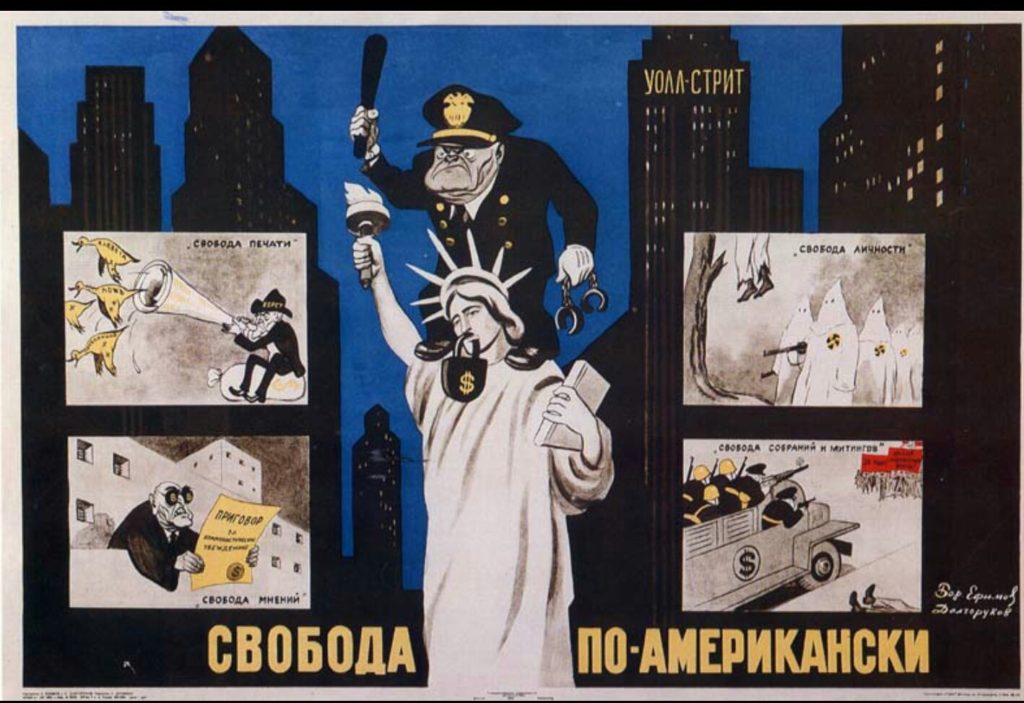
In the eyes of global elites and much of the populations they govern, liberal democracy’s defeat of Fascism and Communism in the 20th century has left it the only viable political system. Many now assume Liberal Democracy sits among humanity’s crowning achievements – with no greater advocate than the United States. But for all the mythology around the concept, 21st century liberal democracy suffers from a crisis of legitimacy. Right-wing populism and its violence exercise power in a growing number of countries with the intention of preventing select populations from taking part in democratic processes. Simultaneously, Marxism, considered defeated and marginal, is seeing a modest resurgence.
Meanwhile, the United States, the wealthiest and most powerful liberal democracy in the world, experiences outrageously high inequality, stagnant wages, an abysmal healthcare system, a housing crisis, routine acts of police violence, and impending ecological catastrophe. The majority of people in the country are suffering with no end in sight. Shouldn’t a democratic political system address those problems? If so, then why are they only getting worse?
The fact is that the capitalist class erects such enormous obstacles to actual democracy that most people can’t or won’t participate in the token democratic processes that do exist. Liberal democracy is, as Lenin once said, “democracy for an insignificant minority, democracy for the rich.”
This is an overview of anti-democratic characteristics and institutions of the U.S. political system, the standard-bearer of democracy for the minority.
Voter Suppression
The United States, historically and presently, systematically suppresses votes. Black Americans, enslaved until the mid-19th century and then openly terrorized, segregated, and disenfranchised through the 20th and 21st centuries, did not get the vote until the 1960s due to various legal, illegal, and quasi-legal methods. Additionally, (white) women could not vote until 1920, and up to the mid-19th century, voting was commonly restricted based on property. Today, measures which produce voter disenfranchisement are still in place.
To start, election day is not a national holiday, but a regular workday. Working on election day makes it incredibly difficult to find time to vote. Higher income voters may be able to take time off, but the poorest workers cannot, and with polling places closing between 6pm and 8pm, it is impossible for some to get to the voting booth. Liberals accept early voting as an acceptable solution to the problem but some states enacted laws restricting early voting. For many, the chance to vote remains subject to the whim of employers.
But voter suppression goes deeper than simply making it hard for workers to find the time to vote on election day. Conservatives, in a cynical plot to suppress the votes of the poor, spread the myth of widespread voter fraud and use it to enact repressive voter identification laws in many states. Such laws restrict the types of identification polling stations will accept– work, college, and public assistance IDs are among the types not accepted. Those restrictions disproportionately affect minorities, immigrants, and the poor—populations which may not have the money, transportation, or time required to obtain appropriate identification.
Of course, voter ID laws are an obstacle only for registered voters. In some states, like North Carolina or Florida, state officials purge the roles of registered voters under spurious accusations of voter fraud. Up to 51 million eligible voters in the United States aren’t registered to vote, and right-wing lawmakers are attempting to make it more difficult to register. The simple solution is to automatically register everyone to vote, but the political capital to do so is nonexistent.
Only the working class faces myriad obstacles to cast their ballots, and the poorer the worker, the more obstacles appear before them.
Gerrymandering
Gerrymandering is essentially the redrawing of voting districts by a political party to gain an electoral advantage. It is a concept easier to understand with a visual (from the Washington Post):

The party in charge of drawing congressional districts can divide the map any way they want, which often means cutting up known progressive population areas into little pieces and then grouping those pieces with larger conservative districts. This essentially dissolves the left-leaning vote. Notice how absurd the shapes of these districts get:
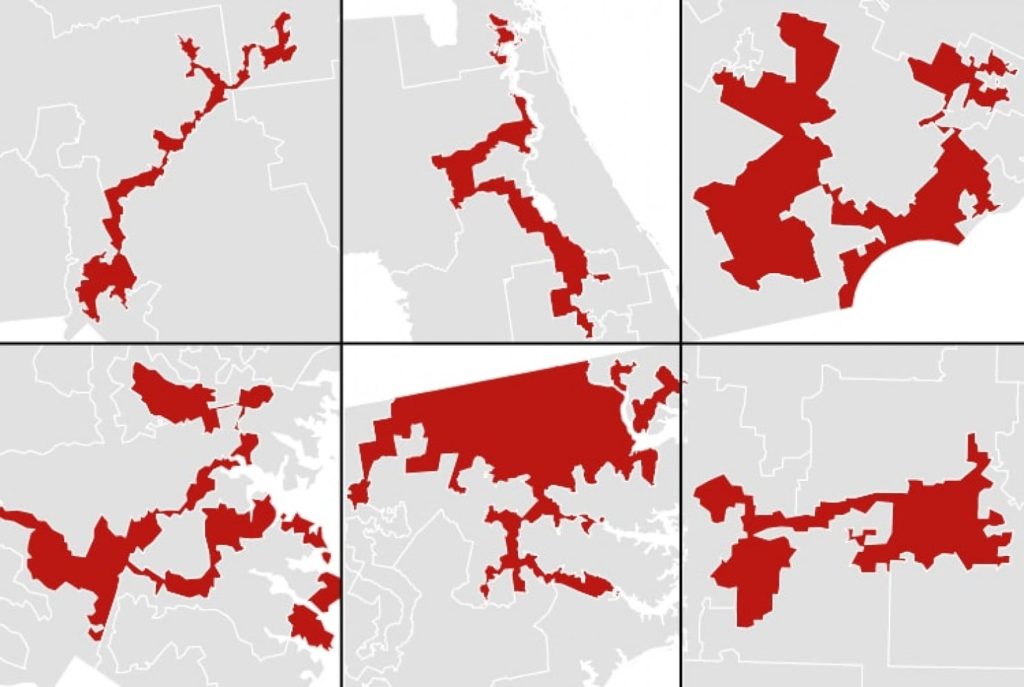
In the 2014 midterm election gerrymandering allowed Republicans to retain control of the House, despite being outvoted. Mother Jones provides a good visualization of the 2014 election here:

In the 2018 midterm elections, Democrats took the House, but by a smaller margin than expected due to gerrymandering. It’s clear that the process is both deeply bureaucratic and anti-democratic, but as long as those who benefit are in charge, it will continue.
The Electoral College
Presidential elections are just as bureaucratic and convoluted as legislative ones. On election day it appears that you are casting your vote for president, but really it’s more complicated. While drawing up the Constitution, there was a major disagreement centered on whether to have Congress or all land-owning men elect the president. They compromised by creating the Electoral College.
The Electoral College works like this: before the presidential election, a slate of “electors” are nominated by each political party. When you cast your ballot you are not voting for a candidate, but a political party’s electors. The Electoral College consists of 538 electors, with 270 forming a majority. All but two states have a “winner takes all” system. For example, the state of New Jersey has 14 elector spots to fill or 14 “electoral votes”. If a majority of the population votes for the Democratic Party, then all 14 elector slots go to the Democratic Party electors, who vote for the Democratic candidate at a later date. This occurs in each state until one party has 270 electoral votes. Everyone who voted Republican in New Jersey? Their votes never make it to the Republican candidate. Everyone who voted Democrat in Texas? Their votes are effectively thrown out.
To simplify– each state counts for a certain number of points. NJ 14, Utah 3, California 55, etc. Whichever party gains the most votes in California receives 55 points for their candidate. Your vote does not actually count toward your preferred candidate. Instead, it decides which candidate gets the points your state has to offer. This means that the President of the United States is not chosen by popular vote. This has serious consequences. There are presidents who have lost the popular vote but won the election—most recently, Donald Trump and George W. Bush.
The Merger of Capitalists and the State
While it’s necessary to examine individual policies that restrict democracy, it’s also important to analyze anti-democratic social and economic structures the policies operate within. A simple explanation of capitalism illuminates and contextualizes these structures.
The world can be divided into two broad groups of people: those who own the things necessary for society to function and for people to survive, and those who do not own these things. The first group, the capitalists, owns everything from factories to transportation infrastructure, farmland to real estate, and everything else used to produce our society. The rest of us—the workers—write the code, drive the trucks, stack the shelves, work the call centres, serve the food, pack the packages, and ensure that the things capitalists own operate correctly. It is not a symbiotic relationship, but an exploitative one. The workers own only their labor power, which they sell to a capitalist in exchange for wages. But wages are always less than the profit that workers produce for the capitalist.
One way that the capitalist class maintains this exploitative system is through the state.
The state’s primary function is as a tool used by one class to suppress another. Under feudalism, it was used to exploit and oppress serfs for the benefit of lords. In modern society, it is used by capitalists to exploit and oppress workers.
We are conscious of this when we speak of “money in politics“. U.S. elections, presidential or otherwise, are primarily funded by wealthy individuals and corporations. “Citizens United”, the Supreme Court decision allowing corporations to funnel a previously unheard of amount of money into political campaigns via “Super PACs,” is the most famous example. But even if Citizens United were repealed the rich would continue to buy our democratic process. Besides individual capitalists bankrolling entire political campaigns, billionaires own the media whose job it is to report on elections, coordinate with and fund influential think-tanks that shape policy, and even draft legislation.
Lobbying by capitalists is particularly detrimental to authentic democracy. Each lobby organizes by industry to convince lawmakers to enact profitable legislation for that industry. Pharmaceutical companies, oil companies, defense manufacturers—every single industry—have powerful lobbyists in Washington. In what amounts to bribery, lobbyists treat members of Congress to expensive dinners, sporting events, and expensive vacations where they plead the case for their industry. During these one-on-one meetings, politicians are often promised jobs as lobbyists if they comply with the industry’s demands. The transition from public servant to private lobbyist comes with a pay raise and mostly consists of calling in favors from old friends and colleagues to influence policy. This “revolving door” permeates through all levels of government from high ranking officials to congressional staffers and bureaucrats.
This “revolving door” is a clever metaphor masking a more insidious truth—capitalists and politicians are identical. Legislators, cabinet members, and administration bureaucrats all slide effortlessly between the role of a public official and companies like Goldman Sachs, ExxonMobile, and Lockheed Martin. This is most explicit in the Trump administration, where former CEO of ExxonMobile ran the State Department, and the Environmental Protection Agency is currently run by a former coal lobbyist. And this is not to mention Trump himself, a billionaire real estate developer.
The interchangeability of capitalists and government officials is not unique to the current government, but a fact of every presidential administration. After his stint in government former Attorney General Eric Holder, who chose not to prosecute any of the big banks after the 2008 financial meltdown, rejoined Covington & Burling, a law firm that represents the largest banks on Wall Street. Holder now works alongside Michael Chertoff, Secretary of Homeland Security from 2005–2009. Chertoff is the co-founder of the “Chertoff Group”, a risk-management and security consulting company that employs former members of the U.S. government including Michael Hayden, former director of the CIA and NSA; a man responsible for Guantanamo Bay, CIA black sites, government surveillance, and countless extrajudicial killings abroad.
The Chertoff Group is far from the only influential business employing former government officials. Lisa Jackson, head of the EPA from 2009-2013 now works for Apple. The former director of the Domestic Policy Council, Melody Barnes, sits on the board of directors for the defense contracting giant Booz Allen Hamilton. Obama’s former Deputy Chief of Staff, Mona Sutphen, went on to work for UBS, a global financial services company. She was also a partner for Macro Advisory Partners, whose purpose—which is clear even when coated in sterile language—is to develop strategies for corporate clients to exploit the global poor. Rich Armitage, Deputy Director of the Bush administration’s State Department, is a board member for ManTech International, a defense and national security company whose other board members include a former CIA official who helped assess intelligence information during the lead up to the Iraq war, the head of an investment management firm, and a retired Lieutenant General. Samuel Bodman, Deputy Secretary of the Department of Commerce from 2001-2004, Deputy Secretary of the Treasury from 2004-2005, and Secretary of Energy from 2005-2009, joined the board of directors for the chemical giant Dupont shortly after leaving the White House.
The list stretches on forever. Every administration official, senator, representative, and congressional staffer comes from or moves onto powerful law firms, lobbying firms, think tanks, NGOs, defense contractors, transnational corporations, or other powerful private institutions.
These are the people socialists refer to as “the ruling class”, and they cannot be voted out of power. If a congressman loses an election he merely becomes a lobbyist and gains even more influence. If the term limit of an administration ends, the individual functionaries and bureaucrats join institutions that hold enormous power over the state. No election can rid the state of capitalist interests; no election can force the state to work in the interest of the working class.
Two-Party System, One-Party State
In 1956 W.E.B. Dubois explained his refusal to vote, “I shall not go to the polls. I have not registered. I believe that democracy has so far disappeared in the United States that no ‘two evils’ exist. There is but one evil party with two names, and it will be elected despite all I can do or say”. Dubois’s analysis is still applicable. The Democrats and Republicans are factions of the same party—the capitalist party. The division between the two occurs over a difference in strategy, not a difference in goals.
Each party is ultimately beholden to the special interest groups funding them, all of whom wish to maintain capitalism and ensure their industry benefits from its maintenance. A base of committed voters must be catered to, but only within the boundaries set by elites. If possible, all debate is restricted to “culture war” issues that, while important, are debated in a way that refuses to confront capitalism. Additionally, while it is generally true that people suffer more under Republican administrations, people continue to suffer immensely under Democratic ones. Both parties are culpable in creating the conditions for misogyny, racism, poverty, exploitation, and all the ills of capitalism.
Republicans appeal to the economic interests of small business owners and the most backward elements of the working class to cut social programs and attack minority groups, while the Democrats appeal to urban professionals and progressive sections of the working class, to surreptitiously implement policies with similar consequences. Democrats helped lay the groundwork for the Trump administration’s worst authoritarian excesses. Some examples include mass deportations, expanding the war on terror, prosecuting whistleblowers, expanding mass surveillance, increasing fracking, and regime change.
Despite not being banned outright, third parties face various anti-democratic measures ensuring their defeat at the polls. During a presidential election, the Electoral College represents the most blatant obstacle to democracy. A candidate, third party or otherwise, can gain 49% of the vote in a state and receive no electoral votes. First past the post voting extends downwards to most congressional and state elections, guaranteeing a loss of representation for everyone who did not vote for the winning candidate. Third party candidates often can’t be voted for at all. In the 2016 presidential election cycle, the Libertarian Party was the only alternative party with ballot access in all 50 states. The Green Party gained access in 45. This was possible because they had the money and full-time organizers to petition for ballot access. Explicitly socialist parties do not have the resources to navigate the complexities of gaining access to the ballot.
First past the post voting and ballot access aside, it is still an uphill battle for alternative political parties. Campaign funding reimbursement is only available to parties who receive 5% of the popular vote during federal elections. Any prospect of obtaining it is hindered by poor media coverage and the 15% poll requirement to gain entry into national debates, which are run by an organization completely dominated by the Democratic and Republican parties.
The Executive, the Senate, the Supreme Court
Every U.S. civics textbook explains that the government is built upon a series of “checks and balances”. The Executive, Legislative, and Judicial branches of government balance power between themselves and check the power of any branch hoping to gain an advantage over the other two. It is said that these checks and balances are necessary to sustain democracy, and yet, as we have seen, we live in a deeply undemocratic society. The reality is that each branch of government is itself undemocratic, and the most democratic of the three, the legislature, has the most checks restraining it.
The Executive Branch
The Executive branch is a sprawling bureaucracy (headed by a president selected through an undemocratic election process) that gains more power every decade. Each department of the executive branch unfolds into a vast bureaucracy of unaccountable functionaries. The Department of Defense alone encompasses the office of Secretary of Defense, Defense Intelligence Agency, National Security Agency, National Geospatial Intelligence Agency, National Reconnaissance Office, Joint Chiefs of Staff, Department of the Navy, Department of the Army, Department of the Air Force, and accounts for 21% of the federal budget. On election day voters elect one candidate, and that one candidate appoints and oversees this military bureaucracy.
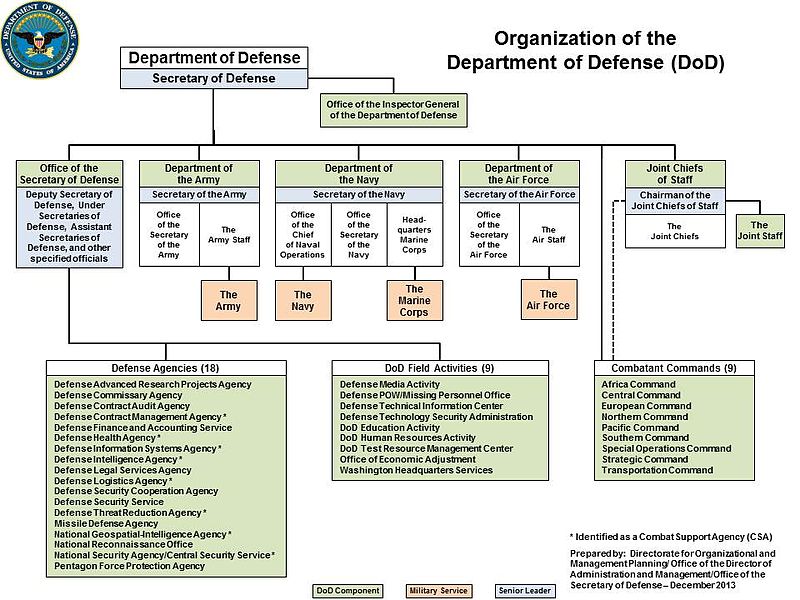
The Executive controls almost all aspects of foreign policy with this endless bureaucracy. The Executive’s power in this regard is made clear by the numerous “conflicts” it has initiated over the heads of Congress since the invasion of Vietnam. Congress, allegedly vested with the sole power to declare war, hasn’t done so since World War Two. Under Obama, the executive branch improved and formalized its ability to kill anyone around the world at will. Congress was unable to prevent the Trump Administration from tearing up the Iran Nuclear Deal. Now the administration threatens to take military action, likely without approval from Congress. There are no checks or balances on the United States war machine.
Of course, this is simply one section of the sprawling Executive branch. Every section of the branch is similarly large and complex. Here is the Department of Justice:
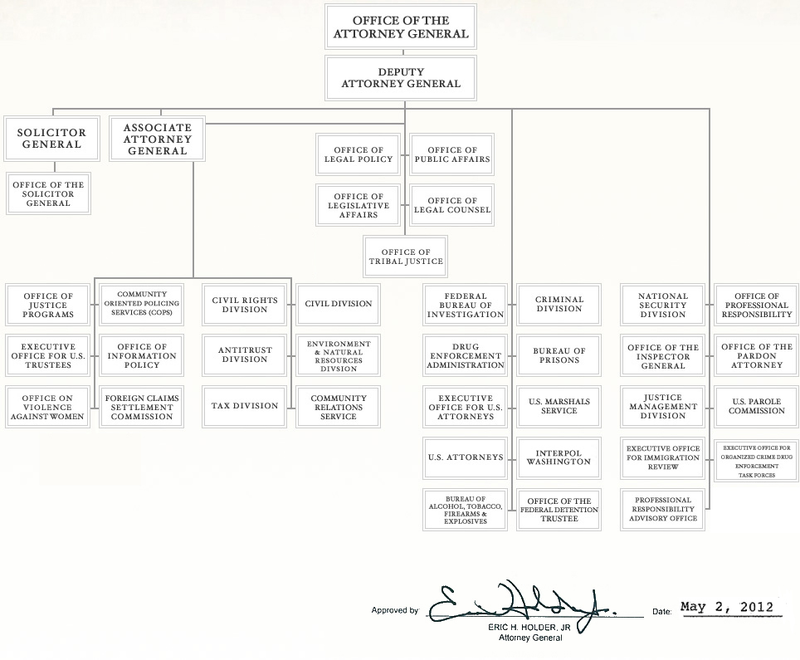
And this is the Department of Commerce:

These bureaucrats are far removed from any democratic accountability, and as we have seen, often use their positions to make themselves rich and advance the interests of their capitalist friends. Bureaucracy is not inherently undemocratic, and when managing a country of 350 million people some form of it is necessary, but minor checks on Executive bureaucracy do nothing to hold it accountable to voters.
Additionally, the President appoints unelected “czars” to coordinate between different departments. In this way, the Executive unifies its bureaucracy around different issues in an attempt to bypass Congress. Writing for Dissent magazine, Mark Tushnet explains,
Presidents appoint czars to deal with new policy problems that cut across regulatory areas, like managing the recent automobile bailout. In a different political environment, presidents might send legislation to Congress. Believing that to be pointless, however, most presidents have decided to appoint czars to pull together everyone who has existing statutory authority in a particular field of policymaking. The czars have no power to develop new regulations, but their prominence and White House credentials give them enormous influence over those who do the regulatory work—and this helps enact presidential policies without congressional oversight.
Ostensibly, it is the purpose of the Legislative and Judicial branches to hold this vast, powerful, bureaucracy accountable, but the Executive has checks on these branches too. Popular legislation passed by Congress can be vetoed by the president, ending the democratic process with a single signature. Additionally, the president nominates which judges sit on the Supreme Court, and no president will nominate a judge keen on limiting executive power.
However, Executive checks on the Legislative and Judicial branches are not the root cause of their ineffectiveness. The two branches are internally dysfunctional and authoritarian on their own.
The Senate
The Legislative branch is the most democratic of the three branches. Unfortunately, this means very little. The Executive branch constantly bypasses Congress, which is evident in the creation of policy czars, the top-down bureaucracy, and the “deep state” that it represents. It is further compromised by the two-party system and the revolving door and is subject to the same voting restrictions and voter suppression detailed above.
Beyond these limits and restrictions, the Legislative branch resists popular demands all on its own. Much of the blame for this falls at the feet of the Senate, the most reactionary, undemocratic, elitist institution of any modern liberal democracy. Its existence is predicated entirely on suppressing the more democratic House of Representatives.
The Senate does not abide by the democratic principle of “one person, one vote”. Instead, it practices “one state, one vote”. While states send representatives to the House proportionate to their population, the Senate is selected on the premise of equal representation of all states. Wyoming, population 584,000, has the same number of votes in the Senate as New York’s almost 20 million people. This is how Senators representing a small minority of the country block the will of the majority. The anti-democratic mechanisms are so blatant that a political party receiving more votes than its opponent won’t necessarily gain more Senate seats. Senators representing sparsely populated states effectively hold democracy hostage not only through voting down popular legislation but also through filibustering, which allows 41 Senators representing less than 11% of the population to block legislation from being voted on at all. Any legislation passed by the House can be rejected or altered by the Senate. It has veto powers over executive appointments and treaties. Two-thirds of the Senate is required to pass a constitutional amendment.
The Senate is a powerful minority ruled institution, with members bankrolled by capitalists, acting as a bulwark against popular progressive legislation. As such, it plays an important part in the Right’s domination of American politics. Daniel Lazare, writing for Jacobin, explains:
Over the next decade or so, the white portion of the ten largest states is projected to continue ticking downward, while the opposite will occur in the ten smallest. By 2030, the population ratio between the largest and smallest state is estimated to increase from sixty-five to one to nearly eighty-nine to one. The Senate will be more racist as a consequence, more unrepresentative, and more of a plaything in the hands of the militant right.
As time goes on the Senate will become more dominated by populist white nationalists at the expense of popular working class demands.
The Supreme Court
The Supreme Court is the final interpreter of the U.S. Constitution. It can overturn legislation passed by Congress through the power of judicial review. Each justice is nominated by the Executive Branch and confirmed by the Senate, and every justice serves for life. The House of Representatives has no power in the process of selecting justices.
For a moment, in the 20th century, liberals viewed the Supreme Court as a vehicle for positive social change. But lasting social change only comes from below. It cannot be handed down from the courts, and so the brief time of progressive rulings inevitably passed. Despite occasional small gains won by the Left, the Supreme Court remains what it was meant to be—a reactionary servant of power guaranteeing the destruction of left-leaning legislation.
The Supreme Court is the greatest threat to legislation born from a mass working-class movement. Popular legislation passed by Congress and signed by the President can be overturned in part or in full by an unelected body of nine people, serving a life term, tasked with upholding and interpreting an outdated and inherently undemocratic document.
If Bernie Sanders is elected in 2020 and manages to shepherd Medicare For All through the House and the Senate, the risk of the Supreme Court ruling the law unconstitutional would remain. If this occurs there would be little recourse. A constitutional amendment is the only way around the Supreme Court, and the requirements are so onerous it took the Civil War to implement recent meaningful amendments.
If all other restrictions on democracy fail the Supreme Court serves as the ultimate negation of popular policy. It is the final backstop against the will of the majority.
A Workers’ Republic
Similar to feudal lords who owned the land and the serfs forced to work it, today a few wealthy capitalists own the means of production that wage workers must work. If the serfs were allowed, through a convoluted process stacked against them, to vote for their lords, would we call that democracy? True democracy is only possible when workers have control over their lives, their communities, and the means of production.
Our economy is not a democracy. Workers have no say in how companies are run, how resources are allocated, or how production is arranged. Political democracy is meant to be a consolation for economic dictatorship— at least we are free to pick our leaders. But in the “Land of the Free” even political democracy eludes us.
The working class is the majority of people in the United States. An average worker spends most of their life producing for society, making society function. And yet the working class has no control over the society that depends on them to survive. What we are living under is the dictatorship of the capitalist class. They control the means of production and use the state to maintain that control. The tyranny of CEO’s, Wall Street executives, corrupt politicians, and bureaucrats decide the fate of the majority.
What is needed is a “dictatorship of the working class” i.e. a dictatorship of the majority in the form of a “workers’ republic”, a true democracy where workers have wrested control of the state from the capitalists, control the means of production, and democratically plan the economy. Democracy, freedom, liberty, equality, the pursuit of happiness are all impossible while the majority of people are ruthlessly exploited and have no control over their lives, where they are denied even the most basic political freedoms promised by liberalism. Humanity’s potential cannot be fulfilled without the emancipation of the working class. Until that day comes democracy is a reality only for the ruling elite and remains an illusion for the rest of us.
